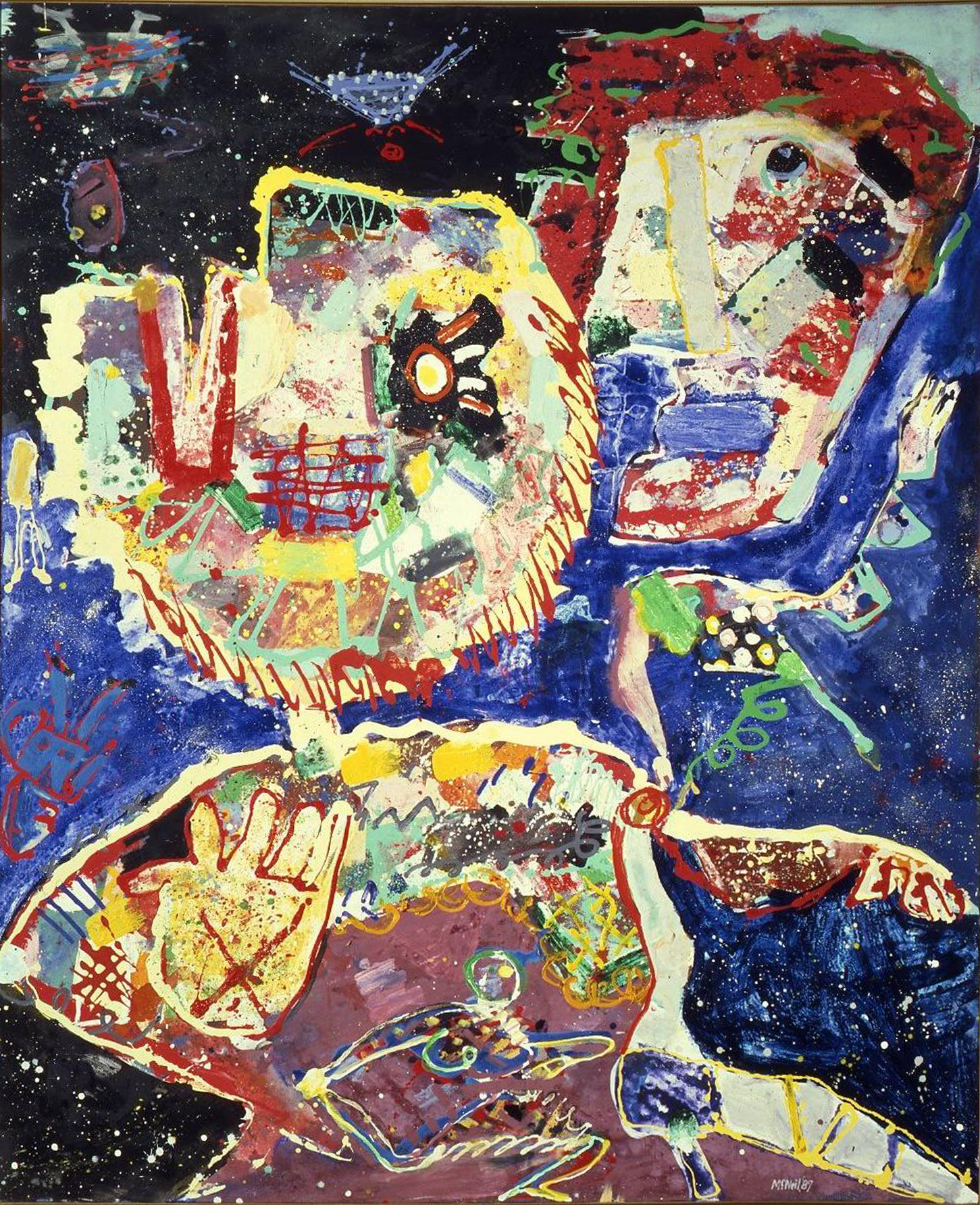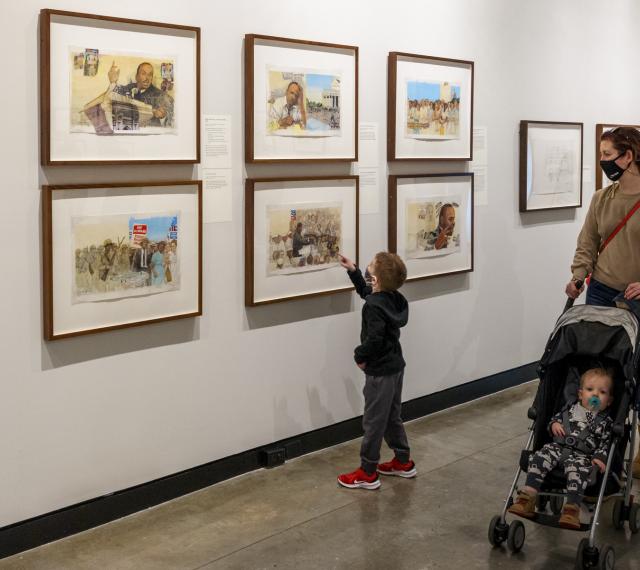George McNeil [was] one of the most energetic of the American Expressionists. Born in Brooklyn, he remained there throughout his life. He studied in New York at Pratt Institute, the Arts Students League, with Hans Hofmann from 1933 to 1936, and at Columbia University. It was Hofmann who gave McNeil what he felt he needed as an artist, 'a strong spatial experience… and the ability to translate that into a two-dimensional equivalent.'
While McNeil’s early work owes much to the painterly abstraction of Hofmann, figurative traces are visible in it. By the early 1960s, the human figure was fully integrated into his paintings, this was done without, however, allowing the work to become illustrative. Since the 1980s, McNeil has been attracted to subjects within a specific environment, such as discotheques and disco dancing. Although the artist claims that he has never visited such places, the works produced with this theme reveal a mixture of dread and humor that is very much a part of the real subject.
Deliverance Disco is a bold, refreshing painting filled with raucous colors and forms that are about to explode out of the picture plane. Push and pull, a term used by Hofmann to explain the ability of color combinations to recede and move forward within a picture is clearly visible between the back and blue background and the two figures that fill most of the composition. The larger of the two figures is formed by brushstrokes and drips with patches of green, red, tan, orange, and gray. The dark background, with its minuscule white spots, has an infinite skylike quality that is further enhanced by tiny floating figures. Deliverance Disco, done in an exuberant painterly manner, is a joyous and satirical statement about the human condition.
Text Written by Alejandro Anreus (Emeritus) (Former Associate Curator at MAM)
This work is not on view.




